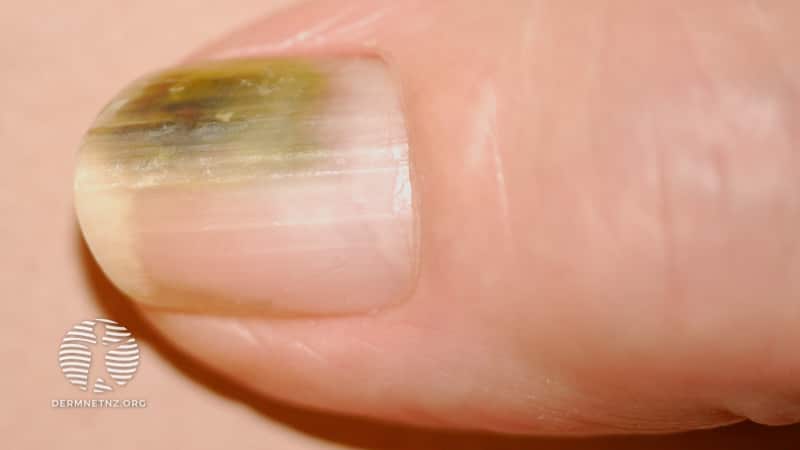Main menu
Common skin conditions

NEWS
Join DermNet PRO
Read more
Quick links
Author: Dr Ian Coulson, Consultant Dermatologist and Editor-in-Chief, 2022.
Edited by the DermNet content department

A 52-year-old lady with a long history of psoriasis has recently noted that a fingernail has turned black. She takes warfarin for a thrombophilic disorder.
The subungual pigment has a green colour, therefore it is likely due to Pseudomonas colonisation in her psoriatic onycholysis. The space between the nail bed and the nail plate retains water and this allows the overgrowth of pseudomonas which proliferates in a warm, wet environment.
The pseudomonas produces a green pigment called pyocyanin. If the pigment was due to blood under the nail, it would have a dark purple hue. The ingestion of warfarin is therefore not relevant. If the pigmentation was due to melanin produced by, for example a subungual melanoma, there would not have been a sudden development of pigmentation and it would have a grey black colour.
The pseudomonas can be eradicated by using antiseptics such as half percent acetic acid solution applied under the nail plate, or a topical antibiotic drops such as gentamicin can be used.